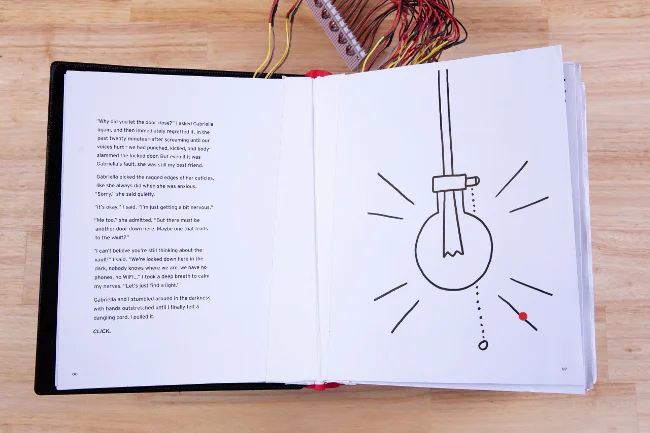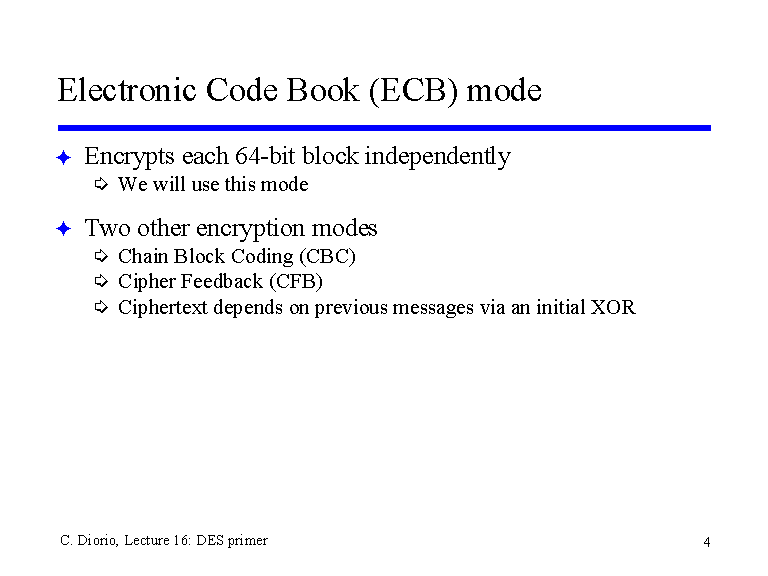

- ELECTRONIC CODEBOOK MANUAL
- ELECTRONIC CODEBOOK SOFTWARE
- ELECTRONIC CODEBOOK CODE
- ELECTRONIC CODEBOOK MAC
Electronic Codebook, All Acronyms, viewed July 8, 2022, MLA All Acronyms. Retrieved July 8, 2022, from Chicago All Acronyms. However, even then you're only making it harder for someone to read the message.Facebook Twitter Linkedin Quote Copy APA All Acronyms. ECB does only needs to synchronize a key and no initialization vector, so perhaps it could be used to replace some data which is currently a plaintext message with a blob of the exact same length.
ELECTRONIC CODEBOOK MAC
Additionally, you would want to MAC the data so it couldn't be tampered with, unless you actually don't mind seeing replayed or reordered messages. Well, ECB seems like it could be alright if your data doesn't repeat or you don't care if someone can identify (essentially fingerprint) blocks of data. If you can't afford to XOR your data, then I'm not sure how you can afford to encrypt in the first place.
ELECTRONIC CODEBOOK SOFTWARE
There's an overhead of 16 bytes for the initial counter and a xor for all of your data. The Program for International Student Assessment (PISA) 2000 Electronic Codebook (ECB) software tool enables analysts to review and extract United States. Now you have a pseudorandom stream of bytes with which you can XOR with your data. Assuming the counter doesn't wrap and isn't reused with the same key (not too difficult when you have 128 bits), the blocks of data from the encrypted counters won't repeat. It uses a 56-bit encryption key that is considered too short Electronic codebook divides a block message and encrypts each block separately. See mode of operation, block cipher and cryptography.
ELECTRONIC CODEBOOK CODE
Each identical plaintext block encrypts into an identical cipher text block d. When the letters ECB follow a cipher, it denotes the electronic code book mode is used for example, DES-ECB and AES-ECB.
ELECTRONIC CODEBOOK MANUAL
It is a manual encryption algorithm not suited for use in computers b.

For example, counter mode (CTR) works by encrypting an incrementing counter. The disadvantage of electronic codebook is: C a. This also means that if an attacker knows a valid block, he could substitute that back and replay the same message over again.Īdditionally, there are modes of operation which are nearly as good as ECB for performance. Because both blocks were correctly encrypted, they will be correctly decrypted despite the fact that the attacker has some kind of control over what your resulting data is. An attacker could reorder the two blocks and you would be none the wiser. In any case, the output length of an actual block cipher is always constant. I suspect something mustve gotten mixed up somewhere between your original assignment and your description of it here.


What does this mean for your encrypted data? Well, imagine you had data that fits in two blocks. RSA is a public key encryption scheme, not a block cipher, so 'RSA in ECB mode' doesnt really make sense. Given a key, an algorithm, and a block of data, the end result will always be the same. Symmetric key encryption forms a one-to-one mapping from plaintext to ciphertext and back. However, it is possible to gain some information about your plaintext given some ciphertext encrypted using ECB - namely, you can tell when a block is repeated. What do I mean semantic security? Basically, it's the idea that an adversary cannot gain more information about your plaintext (other than its length) given your cipher text. It's probably possible to find contrived examples, but things like real-time applications should not be one of them.Įlectronic Code Book is the base operation other secure operating modes (CBC, CTR, etc.) are built from however, because it is deterministic, it is not semantically secure from attackers. No, ECB should never be used in practice with anything of consequence.


 0 kommentar(er)
0 kommentar(er)
